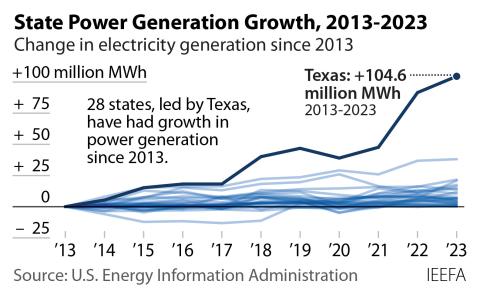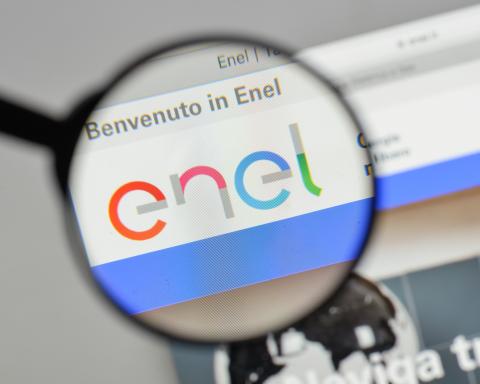There’s a Better Way Out of This Mess Than What Paducah Power Proposes
By Tom Sanzillo and David Schlissel —
The recent plan proposed by Paducah Power System to reduce high electricity costs for residents and businesses will neither bring rates down to a manageable level nor stabilize the utility’s finances.
The good news: There’s a better way forward.
To see through the bad offer on the table, it’s helpful to understand some of the background on how Paducah today has the highest electricity rates in the state and pays far more than it should.
For most of the history of Paducah Power, ratepayers were charged reasonable rates. That all began to change when the utility agreed in 2005 to buy more power than it needed from the Prairie State Energy Campus in a deal that locked the utility-and its customers-into an expensive long-term commitment that benefitted the builders and financiers behind Prairie State at the expense of PPS’ customers.
Natural gas is abundant and inexpensive today, and power prices are low and affordable in regional competitive power markets-which is where Paducah should be buying its electricity. Paducah residents and businesses, by all rights, ought to be paying much lower rates now and into the foreseeable future.
That’s not what’s happening, though, because Prairie State is producing absurdly expensive electricity, and through deals like those it has with Paducah, has pushed ratepayers into bearing the brunt of that expense.
The rate-reduction plan Paducah Power rolled out last month might provide some relief, but that relief will be small, temporary and costly in the long run. It pushes short-term costs onto future ratepayers, and it kicks the can down the road by promising-through unproven assertions-that millions of dollars can be saved just by bringing in a new salesman to help PPS sell its share of the excess and overpriced electricity it has to buy from Prairie State.
The heart of Paducah Power’s problem is that it has too much debt. That’s because the utility was recruited into investing in Prairie State with promises of stable, low-cost power.
Paducah was enticed somehow into buying too big of a stake in the plant, which was constructed at a cost of $5 billion, twice what was initially estimated. Paducah Power’s electricity is unaffordable today because of those overruns and because of Prairie State’s fundamentally weak business model.
What to do?
Paducah Power executives, and some of the city’s elected leaders, want citizens to shoulder the burden themselves. That’s the core of the utility’s recent proposal.
This is wrong.
Peabody Energy, Bechtel Corp., various investment bankers, assorted bond dealers, bondholders and several law firms have profited or continue to profit from what was plainly a mistake.
They can afford to share this load. The bondholders who own the debt Paducah is paying for have assets worth a combined $6.7 trillion.
Three of those bondholders—Invesco, Franklin Templeton and Nuveen Investments—hold approximately 66 percent of the debt. They and their subsidiaries are worth $2.4 trillion. Peabody, even with its recent dismal financial performance, is worth $2.4 billion. Bechtel, which billed for the cost overruns, is one of the largest companies in the world, with annual revenues of $37.9 billion in 2013.
The underwriters for the bonds—those who engineered the deal and collected big fees on it—included Hilliard Lyons, J.P. Morgan & Co., Wells Fargo, Raymond James Securities and Edward Jones.
Paducah Power took a risk, to be sure, but so did the other players. Anytime a public power project is financed, it has many stakeholders by design, so that risk is distributed equitably. The way forward in Paducah is to implement a debt-relief plan that requires all parties to contribute and that offers an honest assessment of Prairie State’s operating viability.
While workouts like these are rare, they do occur. Just in the past two years, for example, Jefferson County, Alabama, and the city of Stockton, Calif., have gone through bankruptcy proceedings in which bondholders in each case ended up forgiving some of the principal value of debts.
In the 1990s, Troy, N.Y., renegotiated lower interest payments with bondholders to avoid bankruptcy, and the distressed Washington State Public Power Supply System worked out a deal in which bond investors received between 10 and 40 cents on the dollar. There are many other instances of public entities reaching new arrangements with creditors to spread financial fallout fairly.
The Prairie State plant is not producing affordable electricity for Paducah, even though that’s what the city was supposed to get for its multi-decade commitment to the plant through 2041.
It was, and is, a bad deal for Paducah, and those who have gained from it should be compelled to join the public dialogue on how to find a solution. The idea that residents and businesses alone should bear all the costs of a shared mistake is hogwash.
Tom Sanzillo is the director of finance for the Cleveland-based Institute for Energy Economics and Financial Analysis. David Schlissel is IEEFA’s director of resource planning analysis.
[This op-ed first appeared in today’s Paducah Sun]












